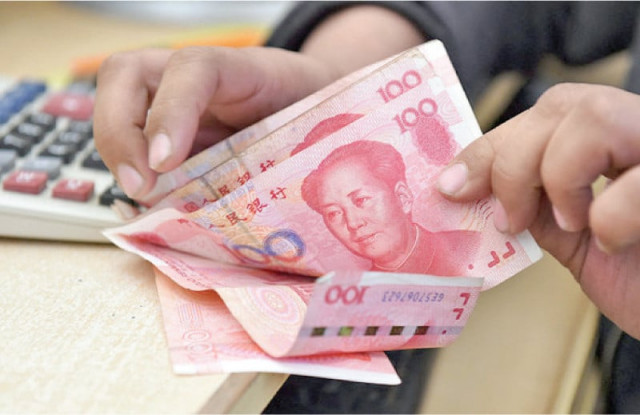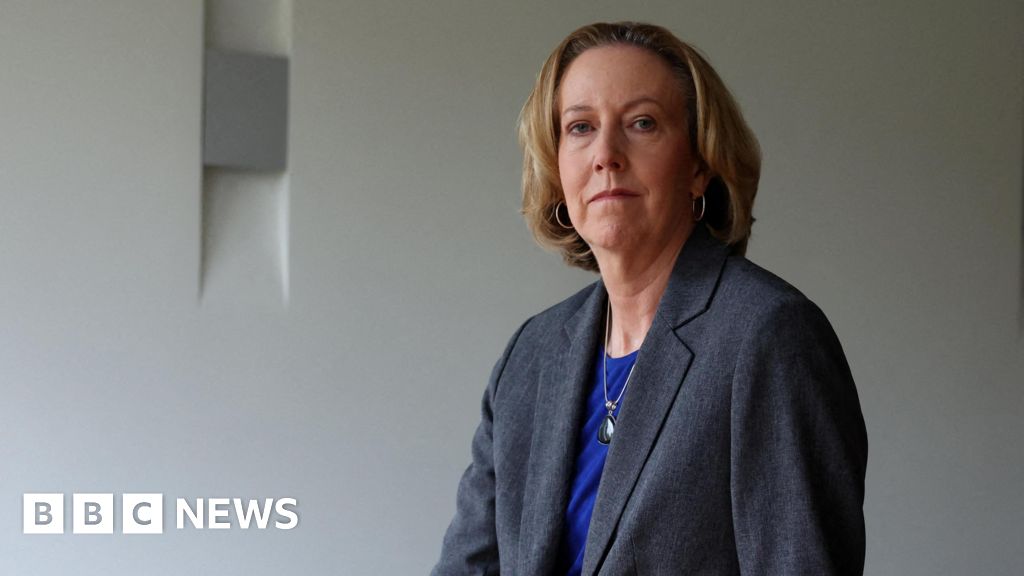Business
Tories pledge to get ‘all our oil and gas out of the North Sea’

Conservative leader Kemi Badenoch has said her party will remove all net zero requirements on oil and gas companies drilling in the North Sea if elected.
Badenoch is to formally announce the plan to focus solely on “maximising extraction” and to get “all our oil and gas out of the North Sea” in a speech in Aberdeen on Tuesday.
Reform UK has said it wants more fossil fuels extracted from the North Sea.
The Labour government has committed to banning new exploration licences. A spokesperson said a “fair and orderly transition” away from oil and gas would “drive growth”.
Exploring new fields would “not take a penny off bills” or improve energy security and would “only accelerate the worsening climate crisis”, the government spokesperson warned.
Badenoch signalled a significant change in Conservative climate policy when she announced earlier this year that reaching net zero would be “impossible” by 2050.
Successive UK governments have pledged to reach the target by 2050 and it was written into law by Theresa May in 2019. It means the UK must cut carbon emissions until it removes as much as it produces, in line with the 2015 Paris Climate Agreement.
Now Badenoch has said that requirements to work towards net zero are a burden on oil and gas producers in the North Sea which are damaging the economy and which she would remove.
The Tory leader said a Conservative government would scrap the need to reduce emissions or to work on technologies such as carbon storage.
Badenoch said it was “absurd” the UK was leaving “vital resources untapped” while “neighbours like Norway extracted them from the same sea bed”.
Her plan echoes US President Donald Trump’s pledge to “drill, baby, drill” and embark on new oil and gas exploration. It is a reversal of former President Joe Biden’s Inflation Reduction Act, which channelled billions of dollars into clean energy.
In 2023, then Prime Minister Rishi Sunak granted 100 new licences to drill in the North Sea which he said at the time was “entirely consistent” with net zero commitments.
Since then, major energy companies such as BP have U-turned on the level of investment in renewables to focus on increasing oil and gas production in order to boost profitability.
Tessa Khan, executive director of Uplift, a research and campaign group, said Badenoch’s plan was “reckless” and would not “bring down energy bills”.
“These rules are the bare minimum to needed hold the industry to account, and removing them will simply mean more emissions, more environmental harm and more handouts to oil and gas giants at the nation’s expense,” she said.
Reform UK has said it will abolish the push for net zero if elected.
The Liberal Democrats and the Green Party have been contacted for comment.
Research shows that 2024 was the first calendar year where the average temperature exceeded 1.5°C.
This made it the hottest year since records began in 1850, according to the Copernicus Climate Change Service, which is managed by the European Commission and uses data from the European Union’s space programme.
The UK was one of 200 countries to sign the Paris Agreement who agreed to “pursue efforts” to limit global temperature rises to 1.5C and keep them “well below” 2.0C above those recorded in pre-industrial times.
The current government said it had made the “biggest ever investment in offshore wind and three first of a kind carbon capture and storage clusters”.
Carbon capture and storage facilities aim to prevent carbon dioxide (CO2) produced from industrial processes and power stations from being released into the atmosphere.
Most of the CO2 produced is captured, transported and then stored deep underground.
It is seen by the likes of the International Energy Agency and the Climate Change Committee as a key element in meeting targets to cut the greenhouse gases driving dangerous climate change.
Business
Why Croatia’s capital wants to hold the best Christmas market

Guy Delauney Balkans correspondent
 AFP via Getty Images
AFP via Getty ImagesChristmas markets are not just tradition across Europe, they are big businesses that give cities a huge economic boost every December. For Zagreb, the capital of Croatia, it is an effective way of attracting tourists outside of the country’s main summer season.
The words “tourism” and “Croatia” are likely to conjure visons of sparkling Adriatic vistas during the hottest months of the year.
Tourism accounts for more than a fifth of the economy of this Balkan country, and it is keen to encourage more visitors to arrive outside of the height of summer. Yuletide frolics are a key part of that strategy.
“We’re making a transformation,” says Croatia’s Tourism Minister, Tonci Glavina.
“We are developing as a year-round tourism destination – we are not a summer destination anymore. Croatia has really made a significant development. At some point way back it was just sun and sea, but now Croatia offers many tourism products all across the country.”
Zagreb Advent, as the capital’s Christmas markets and events are collectively known, is the poster child for this approach, with billboards in neighbouring countries urging people to attend. In fact, this year the campaign has spread as far as London’s tube stations and Milan’s buses.
There are even special trains to bring visitors from Slovenia and Hungary. All of it is part of Zagreb’s push, in a very crowded field, to become one of Europe’s most popular Christmas markets.
While some cities might limit their offering to a single location, Zagreb Advent is a multi-venue spectacular that takes over large chunks of the centre.
“The entire city has become a festive ground for celebrating Christmas throughout the whole of December,” says Slavica Olujic Klapcic, who manages one of the Christmas market areas.
“What’s really special around here is that each of the locations has its own theme, and it’s a little bit different in decoration, and in the content that it offers. So for a visitor, I think it’s a good deal, because by taking a walk through Zagreb, you can see many different spots.”
Like other Christmas markets across Europe there are no shortages of the usual seasonal staples, such as sausages and mulled wine. But there are also multiple music stages, craft stalls, vendors offering traditional Croatian food, art installations, and an enormous ice rink.

“It brings life to Zagreb,” reckons Zrinka Farina, who is involved with putting on Christmas market events outside the city’s historic Hotel Esplanade, as well as a food and music market at nearby Strossmayer Square called Fuliranje – which roughly translates as “fooling around”.
But she says that Croatians are deadly serious about trying to offer Europe’s best Christmas market. “We are such a sporty nation, we love to compete – and when we do something, we really want to be the best in the world in it.”
Such has been the effort that the city has put into Zagreb Advent since it was first held in 2014 that it was voted the best Christmas market in Europe for three years in a row, from 2015 to 2017.
The competition is organised by travel website European Best Destinations, and Zagreb’s success has helped to drive visitor numbers to the city every December.
Back in 2014, the city saw 100,198 people stay for at least one night during the last month of the year. By 2024 this had more than doubled to 245,352, which the tourist board says gave the city a €100m ($117m; £88m) economic boost.

However, Zagreb has a long way to go if it wishes to catch up with Europe’s Christmas market heavyweights.
The one held in the German city of Cologne is widely reported to be the most popular. It is expected to attract four million visitors this year, with an economic impact of €229m.
Meanwhile, Austria’s capital Vienna attracts around 2.8 million visitors to its Christmas market, and France’s Strasbourg gets two million people.
Zagreb’s event also has a limited history – it is only in its 11th year. By contrast, Dresden’s Christmas market, widely considered to be the world’s oldest, was first held in 1434. Strasbourg’s began in 1570, Vienna in 1764 and Cologne in 1820.
Despite its infancy, Zagreb Advent is said to be attracting visitors from across Europe. “They come here from Italy, Spain, Bosnia, Slovenia and even the UK,” says Lucija Vrkljan, who is working as a steward at the ice rink.
“It’s a great place to be,” says Dario Kozul, the founder of BioMania, a bistro with a stall offering vegan and gluten-free food at the Hotel Esplanade Christmas market. “We have a cross-marketing situation all the time,” he adds.
“People walk into this event and test our food – they’re really very pleased with it. Then we talk about our restaurant, and within the next couple of days, we see them there.”
 AFP via Getty Images
AFP via Getty ImagesMarko Peric, dean of the Faculty of Tourism at Croatia’s University of Rijeka, agrees that Zagreb Advent brings “unusually high” numbers of arrivals and overnight stays in December.
But he cautions that the rest of Croatia’s heavy reliance on the summer season is a weakness that still needs to be addressed. “We need to work and develop our tourist offer in other parts of the year, including the winter,” he says.
“We don’t have snow, but we can offer a lot. We should rely on our gastronomy, which is well known, with many tourists arriving just because of that. And we could use other types of events like carnival in February, or sporting events.”
Tourism Minister Tonci Glavina insists that Croatia is making moves in the right direction. He points out that visitor numbers over July and August were actually slightly down on the same period in 2024.
But the country is still on course for a record-breaking year, thanks to significant growth either side of the summer peak, with around 5% more arrivals in June and September. This, says the minister, is “just perfect”, as is the 10% year-on-year rise over the first week of December.
“We are transforming Croatia to be a sustainable tourism destination, meaning about the same number of guests in peak season, developing the shoulder seasons, and of course developing other parts of the country to be main tourism destinations.”
Zagreb Advent has already shown the benefits. Although that may not be the first thing that springs to a visitor’s mind with all the traditional Croatian treats on offer.
After all, what could be better than a post-skate fritule doughnut, except perhaps a fritule with chocolate sauce.
Business
Building material prices hit record high | The Express Tribune

.
RAWALPINDI:
New federal and provincial taxes, along with continuous increases in electricity, gas and transportation costs, have led to an unprecedented rise in the prices of all building materials.
In the market, top-quality bricks are now priced at Rs25,000 per thousand, prompting contractors to rely more heavily on old bricks.
A bag of cement is available at Rs1,350, steel at Rs255,000 per ton, gravel at Rs3,500 per trolley, sand at Rs3,000 per trolley, masonry labour at Rs2,500 per day, and general labour at Rs1,500 per day.
Prices of cement plaster, standard marble, plumbing materials and electrical supplies have also increased by up to 30 per cent. The upward trend in building material prices continues.
Contractors say building material costs have seen record increases over the past two years.
Contractor Haji Sultan Mahmood said that three to four years ago, a four-marla double-storey house could be completed for Rs7.5 to 8 million, but the estimated cost has now crossed Rs10 million.
Due to this, contractors have shifted from constructing four- and five-marla houses to building two-, two-and-a-half- and three-marla units for sale. Five-marla plots are now divided into two units of two-and-a-half marla each, with double-storey houses built on them.
Business
RMB valuation and limits of traditional exchange rate models | The Express Tribune

Global focus is on the Chinese currency, sparking debate over whether it is overvalued or undervalued
Foreign exchange reserves have started increasing on the back of recent loans by the AIIB, World Bank, and ADB. The reserves stand over $8.2 billion, and the IMF board is also expected to approve a $700 million tranche this Thursday. photo: file
KARACHI:
China’s merchandise trade surplus surged by $111.7 billion in November, reaching an impressive $1.08 trillion for the first 11 months of the year, a 22.1% increase compared to the same period of last year, according to official data. Western media has described the massive trade surplus as “remarkable,” but also warned that it could be “unsustainable,” citing concerns over China’s undervalued renminbi (RMB).
The soaring surplus has raised eyebrows among economists, many of whom have called on Beijing to allow the renminbi to appreciate more gradually over the next five years. They argue that a stronger currency could help boost China’s imports while providing relief to global competitors in Europe, the US, and other regions, who are increasingly losing market share to Chinese exports.
Global market attention has long been fixed on the trajectory of the renminbi, with renewed debate over whether the Chinese currency is overvalued or undervalued. Recent studies, relying on traditional neoclassical exchange-rate models, suggest that the RMB is deviating from its “equilibrium value.” However, economists warn that these conclusions are heavily influenced by the analytical frameworks used and may fail to account for the crucial role that modern financial forces play in shaping currency values.
Judging whether an exchange rate is misaligned is not simple. It’s inherently complex. Conventional neoclassical frameworks – such as the purchasing power parity (PPP) and the Balassa-Samuelson hypothesis – focus on real-economy fundamentals, including productivity, prices and the current account. These models generally view capital flows and foreign-exchange trading as short-term reactions to real economic factors, rather than as independent forces that can influence long-term exchange-rate trends.
That assumption is increasingly called into question in modern highly financialised global economy. Annual foreign-exchange trading volumes are now many times larger than global trade in goods and services, suggesting that frameworks focused primarily on trade balances and relative prices may be far removed from market realities.
Conversely, (post)-Keynesian approaches argue that capital flows, financial cycles and shifts in expectations lie at the heart of exchange-rate movements. While these approaches do not dismiss the importance of the real economy or the current account, they contend that under modern financial systems, capital movements can influence both short-term fluctuations and long-term currency trends. Exchange rates implied by PPP, they argue, may never be reached and can diverge persistently in one direction.
The two approaches, according to economists, need not be viewed as mutually exclusive. Yet continued reliance on a purely neoclassical lens risks producing serious misjudgments, particularly during periods of heightened financial volatility. A comprehensive analysis, they argue, must account for both real-economy fundamentals and financial forces, with the latter often playing a decisive role.
The renminbi clearly exemplifies this debate. When China’s position in the financial cycle is taken into account – rather than focusing narrowly on the current account or productivity – recent movements in the currency appear less anomalous. Once financial-cycle dynamics are incorporated, the RMB may not deviate significantly from any plausible notion of an “equilibrium exchange rate”, assuming such a benchmark exists at all.
Neoclassical exchange-rate theory is based on several core assumptions: efficient markets, rational agents, flexible prices and wages, and the neutrality of money. Within this framework, trade imbalances are expected to self-correct through exchange-rate adjustments. A country running a persistent current-account deficit should see its currency depreciate, while surplus countries should experience appreciation. Over time, exchange rates are assumed to converge towards levels determined by real fundamentals.
However, real-world evidence frequently contradicts these predictions. The United States, for example, has run large and persistent trade deficits for decades without experiencing a corresponding long-term decline in the dollar. In the 1990s, the US trade deficit widened even as the dollar strengthened. Similarly, China’s own experience has shown that the relationship between the RMB and the current account has been far from stable, despite the presence of capital controls.
(Post-)Keynesian economists argue that these anomalies reflect the growing dominance of financial forces. According to data from the Bank for International Settlements (BIS), daily global foreign-exchange trading reached about $7.5 trillion in 2022, dwarfing annual global trade flows of roughly $32 trillion. In such an environment, exchange rates are shaped primarily by financial transactions, capital flows and expectations rather than by trade fundamentals alone.
Under this view, exchange rates are not anchored to a stable long-run equilibrium. Instead, they reflect the cumulative outcome of short-term movements driven by investor sentiment, risk perceptions and shifts in global liquidity. Capital flows can sustain currency misalignments for extended periods, and there is no automatic mechanism ensuring that current-account imbalances are corrected through exchange-rate changes.
China’s post-2005 experience offers a case in point. Following reforms to the exchange-rate regime, the RMB underwent a period of nominal appreciation alongside rising domestic prices, resulting in sustained real effective exchange-rate appreciation. This pattern is difficult to reconcile with PPP-based mean-reversion models but is consistent with a financial-cycle perspective, in which capital inflows, rising asset prices and credit expansion reinforce one another.
More recently, the picture has shifted. Despite steady improvements in manufacturing capability and productivity upgrades, the RMB’s real effective exchange rate has depreciated. BIS data show that between January 2022 and October 2025, the RMB’s real effective exchange rate declined by around 16%. This outcome runs counter to predictions based on the Balassa-Samuelson hypothesis, which would expect productivity gains to translate into real appreciation.
Economists attribute this divergence to China’s position in a downswing of the financial cycle. As credit growth slowed, domestic demand weakened and price pressures eased, the extent to which productivity gains could support currency strength is limited. At the same time, reduced incentives for holding RMB-denominated assets contributed to periods of depreciation against the dollar.
Signs are now emerging that the financial-cycle adjustment may be nearing its end. As conditions stabilise, incentives for capital allocation into RMB assets are beginning to recover, a shift that has already been reflected in recent currency movements. Against this backdrop, analysts argue that claims of significant RMB undervaluation based solely on traditional models may be overstated.
The broader lesson, economists say, is that exchange-rate analysis must evolve with the structure of the global economy. In an era dominated by finance, capital flows and expectations, frameworks that marginalise these forces risk misreading both the causes and consequences of currency movements.
The writer is an independent journalist with a special interest in geoeconomics
-

 Business1 week ago
Business1 week agoHitting The ‘High Notes’ In Ties: Nepal Set To Lift Ban On Indian Bills Above ₹100
-

 Business7 days ago
Business7 days agoStudying Abroad Is Costly, But Not Impossible: Experts On Smarter Financial Planning
-

 Business7 days ago
Business7 days agoKSE-100 index gains 876 points amid cut in policy rate | The Express Tribune
-

 Sports6 days ago
Sports6 days agoJets defensive lineman rips NFL officials after ejection vs Jaguars
-

 Tech1 week ago
Tech1 week agoFor the First Time, AI Analyzes Language as Well as a Human Expert
-

 Entertainment6 days ago
Entertainment6 days agoPrince Harry, Meghan Markle’s 2025 Christmas card: A shift in strategy
-

 Business4 days ago
Business4 days agoBP names new boss as current CEO leaves after less than two years
-

 Tech4 days ago
Tech4 days agoT-Mobile Business Internet and Phone Deals







